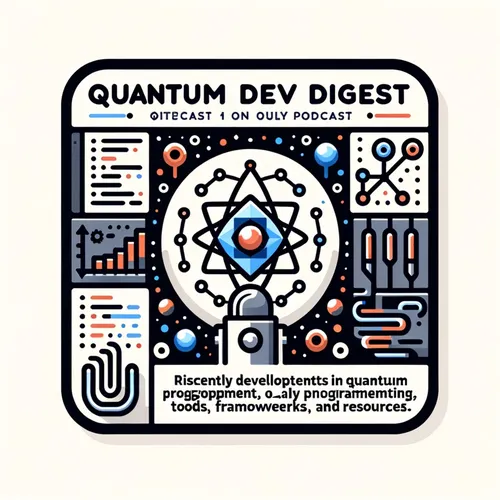Quantum Leaps: ETH Zurich's Room-Temp Triumph Shatters Expectations
- Author
- Quiet. Please
- Published
- Sun 10 Aug 2025
- Episode Link
- https://www.spreaker.com/episode/quantum-leaps-eth-zurich-s-room-temp-triumph-shatters-expectations--67320774
This is your Quantum Dev Digest podcast.
Gravity is overrated. I learned that this morning while reading about ETH Zurich’s breakthrough: they’ve managed to wrangle hundreds of millions of atoms into a high-purity quantum state—at room temperature. Yes, you heard that right. No cooling to near-absolute zero in a vacuum chamber buried beneath the Alps. This is Leo, your Learning Enhanced Operator, and I’m about to pull back the curtain on the quantum world here on Quantum Dev Digest, where we swap spooky action for sharp insight.
Picture this: a cluster so small it vanishes beneath a speck of dust, yet so large—hundreds of millions of atoms—that, by quantum standards, it’s a continent. Usually, when we talk about coaxing such a system into quantum behavior, we have to freeze it so completely that the dance of its atoms slows to an imperceptible crawl. Not this time. A team led by Lukas Novotny and Romain Frimmer showed that 92 percent of the motion of their nanosphere cluster is driven by quantum mechanics, all while sitting pretty at room temperature. No exotic refrigerants, no space-age chillers—just pure, unadulterated quantum weirdness right under the office lights.
Let’s translate that into something less, well, atom-sized. Imagine trying to hear a single violin in the heart of Times Square at midday—the noise drowns everything out. Cooling a quantum system is like bringing silence to Times Square so you can hear that violin. What ETH did is akin to teaching the violin to play so precisely that it pierces the chaos—even when the city refuses to quiet down. Their technique isolated quantum movement from the classical cacophony, a feat that’s not just a physicist’s daydream. With this, we’re a step closer to robust quantum sensors—think navigation systems that don’t blink when GPS vanishes, medical scanners that see through the fog of biological noise, all powered by quantum states not chained to subzero ice baths.
Why does this matter now? In the race for practical quantum technology, energy efficiency is the finish line. Room temperature operation isn’t just a convenience—it's a revolution. More accessible, more scalable, potentially soon to be everywhere, from hospitals to highways to, yes, desperate coffee makers in physics department basements.
This week’s explosion of milestones extends beyond Zurich. Rigetti hit a record 99.5% fidelity on two-qubit gates—a leap forward in error correction. Fujitsu kicked off development on a 10,000-qubit architecture. The field’s tempo is crescendoing, not just in labs, but in real-world applications, as AI, energy, and classical computing all cross over into the quantum lane.
As we expand quantum frontiers, I’m constantly reminded that the deepest truths—about atoms, about time, even about ourselves—are hidden in the places we least expect. If you’ve got questions, or want me to dive deeper into your favorite quantum conundrum, send me an email at [email protected]. Don’t forget to subscribe to Quantum Dev Digest. This has been a Quiet Please Production—find us at quiet please dot AI. Until next time, keep challenging reality. It’s quantum’s favorite pastime.
For more http://www.quietplease.ai
Get the best deals https://amzn.to/3ODvOta
